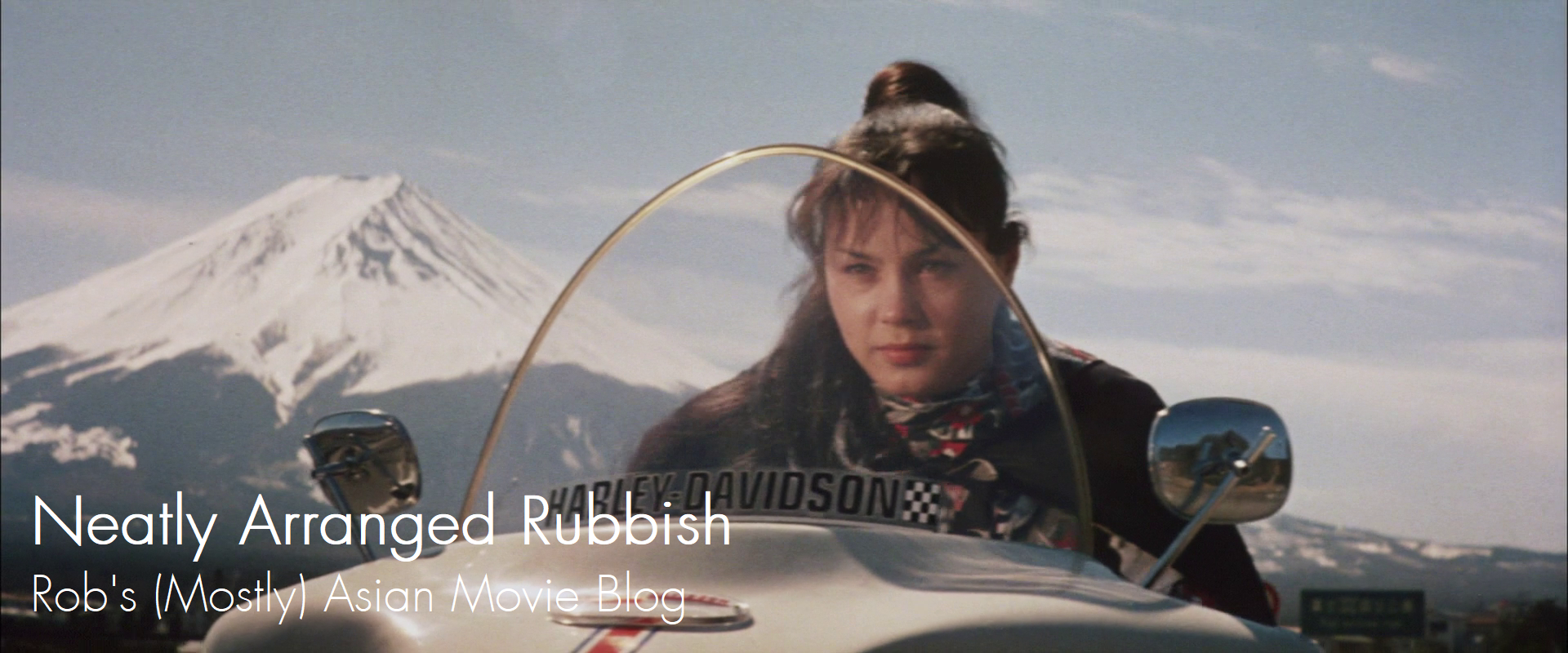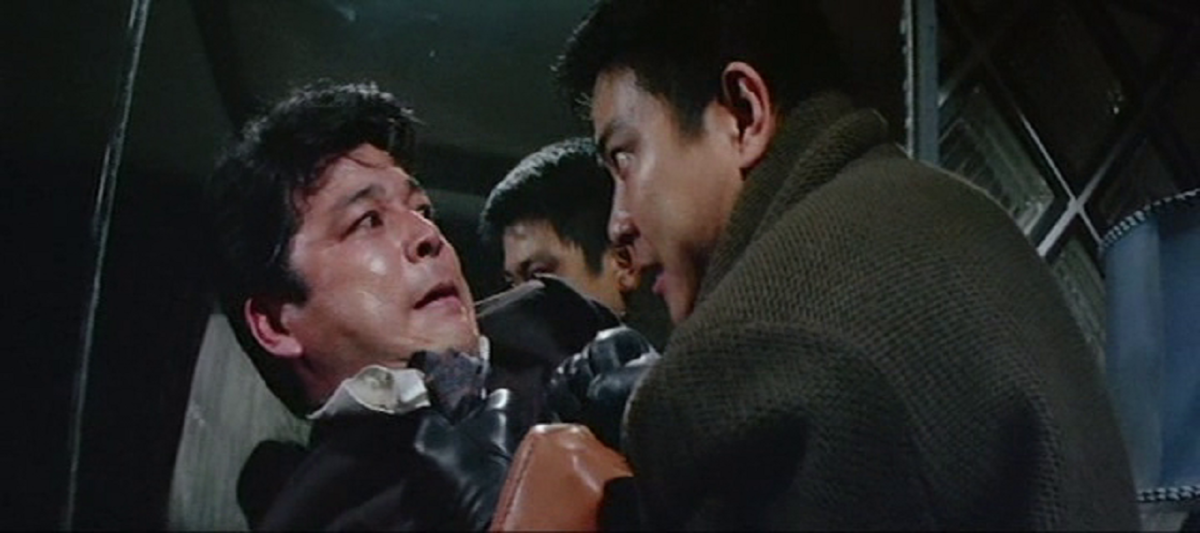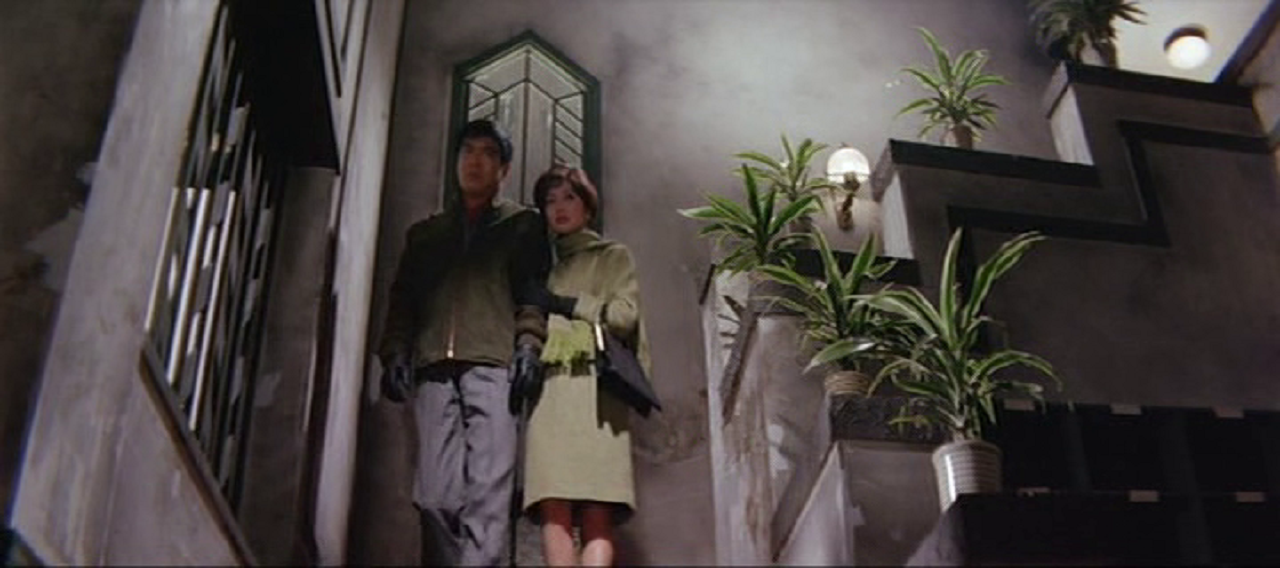Last Updated on April 17, 2021 by rob
During a police interrogation detective Mikami (Yujiro Ishihara) shoots dead a suspected drug mule when the suspect grabs his partner Ishizuka’s (Hideaki Nitani) gun. Understandably, the dead man’s beautiful young daughter (Ruriko Asoaka), with whom Mikami has fallen in love, wants nothing more to do with him. Facing an investigation into the shooting from his superiors Mikami retires from the force. Four years later, working as construction worker on a dam in the frozen wastes of Hokkaido Mikami is visited by a detective (Kaneko Nobuo) who has quite the tale to tell.
It seems that in the aftermath of the shooting Mikami’s partner quit the force and became the wealthy owner of a department store. Now how did he manage that on a cop’s salary? Could Ishizuka have been bribed by those behind the drug mule and fooled Mikami into shooting the old man to shut him up? Reluctantly Mikami returns to the city to uncover the truth but his quest becomes complicated when he discovers the woman he couldn’t forget is now Ishizuka’s wife.
Although 1950’s teen idol Ishihara (the brother of Tokyo’s Conservative governor and filmmaker Shintaro Ishihara) is not my idea of a leading man (here he’s a sort of Cliff Richard with a sneer) this is a clever, well plotted and exceptionally well crafted story. One that oozes emotion thanks to the onscreen chemistry of the three leads and director Masuda’s outstanding mise-en-scene. I was particularly struck by an example of this near the film’s climax as Mikami and Ruriko finally acknowledge their love for each other and ace cinematographer Shigeyoshi Mine frames the shabby motel stairs they’re on so it resembles, of all things, a church. Such impressionistic moments are everywhere in Red Handkerchief (another example is when Asoaka takes off in her husband’s car to meet Mikami and her agitated mental state seems paralleled by the streetlights rushing by reflected in the windscreen) and it’s largely what elevates the movie way above that of the usual Japanese imitation of an American crime movie.
By way of comparison if you ever wondered what a glossy, hard-boiled crime thriller in colour and widescreen directed by Douglas Sirk might have looked like I suspect the answer might be something like this. Ishihara and Asaoka had already been paired together in numerous Japanese movies by this point and the pair have an easy onscreen chemistry. And Hideaki Nitani is an excellent foil as Mikami’s partner. A seemingly smooth operator whose real nature gradually becomes apparent not because of any shame at what he’s done but because the truth threatens to rob him of the only woman he’s ever loved. I thoroughly enjoyed the film’s combination of a love triangle within a murder mystery and the climax, in which the location of the fatal shooting is revisited and restaged and the truth emerges, proves agreeably gripping.
Harumi Ibe’s score – an evocative acoustic number (the opening credits come up over a close up of a moodily lit pair of hands strumming a guitar) that evokes Ishiira’s longing for Ruriko which is the film’s emotional core -is another plus. You wouldn’t expect a crime thriller to pause just to allow its leading man to strum his guitar and sing a few songs as he strolls the back alleys of Yokohama or relaxes in a smoke-filled bar but this is exactly what Red Handkerchief does and Ishihara’s Enka ballads, far from slowing the story down, prove a perfect fit for a movie that’s as much about mood as it is plot. Excellent stuff and far and away the best of the Nikkatsu crime films of the 1960’s. Jo Shishido must have been kicking himself for missing out on this one.


